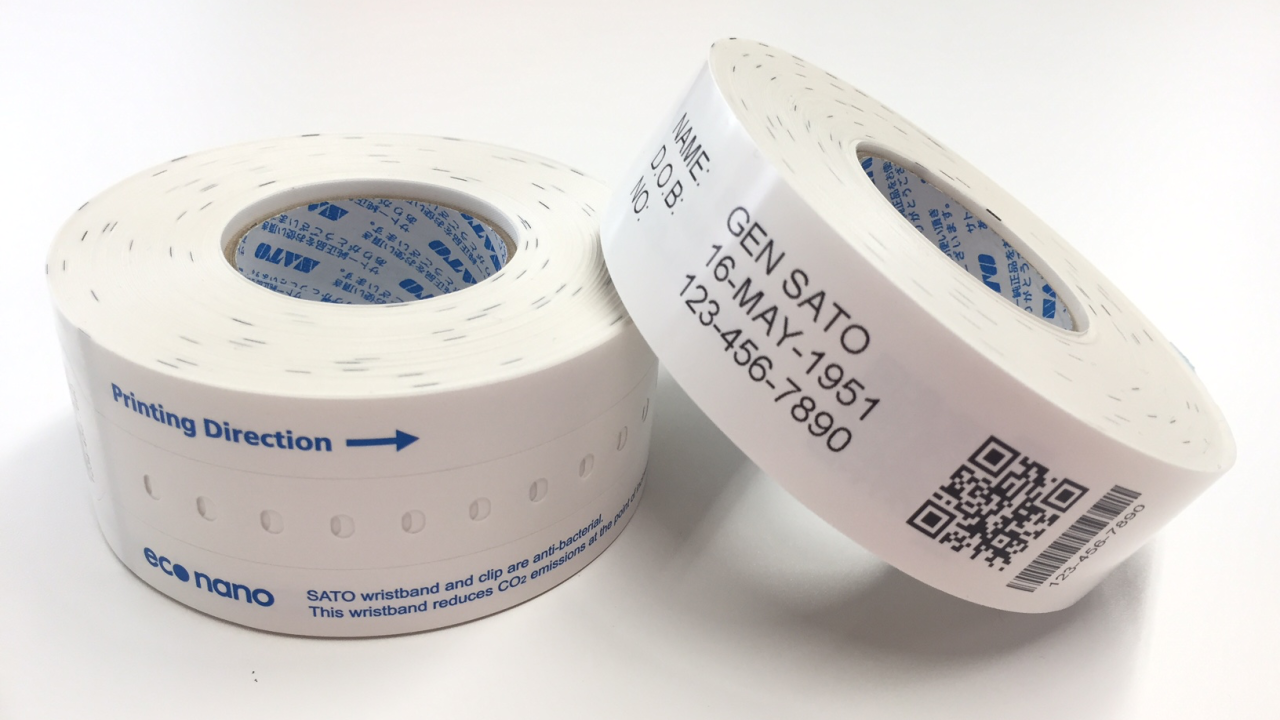Sato Europe launches patient ID wristbands
Sato Europe has developed a range of ID wristbands for the healthcare sector to enhance patient safety, security and comfort.

Four new wristband lines have been launched to complement Sato Europe’s premium Thermal Transfer (TT) Line wristbands. The new range includes the Direct Thermal (DT) Line, Eco Line, Laser Line and RFID Line.
TT Line wristbands is manufactured from extra-soft, durable materials using the Econano technology. Thermal transfer printing delivers a crisp and robust print, said to be durable for up to three weeks. For added data protection, the band includes a security ribbon that conceals patient identification. TT Line wristbands are most suited to long-stay patients, the elderly and babies.
Econano helps to absorb and reduce the carbon dioxide released into the atmosphere when the wristband is incinerated at the end of its use. Using nano vesicle capsule (NVC) technology to add a carbon dioxide absorbent to the wristband's adhesive, Econano wristbands can reduce the amount of CO2 released at the point of incineration.
The four newly launched wristbands have been developed to offer hospitals and other health organizations more cost-effective identification options for short-stay and outpatients whilst delivering many of the same benefits as the TT line.
The Eco and DT wristbands are printed using direct thermal technology, and are designed for hospital stays of up to three and seven days respectively. The material is certified as non-irritable to the skin, under ISO standards. Like the TT line, the DT line incorporates Econano technology and both can be secured with a tamper-proof clip or adhesive to prevent the bands being transferred, maintaining patient security at all times.
The Laser Line is latex-free, is water and soap resistant, and is designed to be used for up to one week. These wristbands come in an A4 sheet format that can be printed via a hospital’s existing laser printer. Each pack contains 250 sheets with self-adhesive bands and labels. The self-adhesive feature also enables tamper-proof closure which guarantees data remains secure to the right patient.
The RFID Line is available with HF, UHF and NFC technologies, catering for multiple situations and scenarios. Hospital staff can scan and track patients from a distance using strategically placed RFID readers or mobile devices, minimizing the need to disturb them for data collection. The RFID technology is also a useful tool for managing access to departments or wards, for example maternity or mental health units. RFID Line wristbands are printed using direct thermal technology, delivering a high quality print that retains data securely for up to one week.
Kevin Allart, healthcare business development manager at Sato Europe, said: ‘We can now offer a complete portfolio of patient ID wristbands to the healthcare sector that suit individual patient needs and are fit for specific hospital environments and stay durations.
‘Healthcare professionals benefit from optimum flexibility and cost-effectiveness in the choice of wristband whilst ensuring patient safety is protected at all times due to accurate data collection and identification. For patients, the ID wristbands have been designed to be comfortable to wear and non-irritable to skin whilst providing peace of mind and convenience.
‘We understand that there is no one-size fits all solution to patient safety and security; that’s why we have extended our range of ID wristbands. Now, we can offer customers in the healthcare sector a comprehensive, cost-effective selection of wristbands that deliver error-free, accurate identification data.
‘Sato has been involved in the development of fail-safe solutions for positive patient identification for more than two decades. We have worked with hospitals and healthcare organizations to deliver solutions that withstand the harsh hospital environment whilst preserving patient data securely and safely to provide peace of mind to patients and healthcare professionals alike.’
Stay up to date
Subscribe to the free Label News newsletter and receive the latest content every week. We'll never share your email address.

